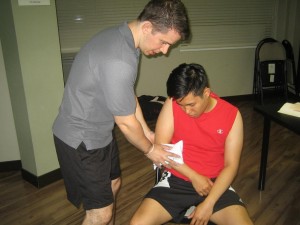Blisters are sacs of fluids on the skin that are caused by a continuous rubbing, like shoes rubbing against your heel. They can also be caused by medical problems like impetigo, shingles, herpes, and chicken pox. The blisters may contain blood and can become pus and eventually becomes infected. But some blisters contain serum clear plasma) that are caused by the red blood cells after the clotting process is finished.
A burn bubble also known as blister can be caused by a second degree burn. They are pouches on the skin that are filled with a clear fluid. Proper treatment of burn bubbles will prevent infection and help the blister to heal properly.
How to treat blisters caused by burns

- Identify the type of burn – a second degree burn affects both the top and deep layers of the skin and can cause blisters.
- Soaking the burned area in cool water to reduce heat from the burn. You can also use cold compress on the affected area. Do not use ice or ice water on the burn. The proper management of burns are readily tackled in first aid training. By taking a course in first aid training, you are prepared to handle burn injuries.
- Apply ointment to the bubble burn and cover it with sterile gauze.
- Avoid breaking the blister since it might cause infection. Burn bubbles just shrink on its own.
- Take an over-the-counter pain medication like aspirin or acetaminophen to relieve pain and apply antibiotic ointment. Bandages should be changed daily. Watch out for symptoms of swelling, pus or redness.
Fever blisters are also called cold sores and caused by the herpes virus (Herpes Simplex Virus, type 1). The blisters are painful and usually occur on the cheeks, nostrils, lips and chin. Blisters that break or open will release pus or clear fluid and then it forms a crust before drying up. You can treat the pain caused by blister, but some people with herpes virus cannot be immediately cured.
How to treat blisters caused by fever
- Be sure you have fever blisters, not other types of sores, like mouth ulcers.
- There are some antiviral medications that can be used to minimize the fever blisters. There are also medications to treat herpes virus like Acyclovir, Penciclovir and Famiclovir. These cannot cure condition but they can reduce the development of blisters.
- Always monitor the fever. Fever blisters are accompanied by fever and other symptoms similar to the flu. Treat these symptoms by taking over-the-counter medications like acetaminophen or aspirin.
- Applying a cold compress on the fever blisters. It relieves pain from the cold sore. Leave the cold compress on the sore for about 10 minutes. Other alternative is a warm compress which can also reduce pain in the area.
- Lastly, keep the area clean and avoid touching, scratching or squeezing the sore. Your toothbrush should always be clean to prevent contamination of the fever blisters as well as preventing spreading to non-infected areas.
